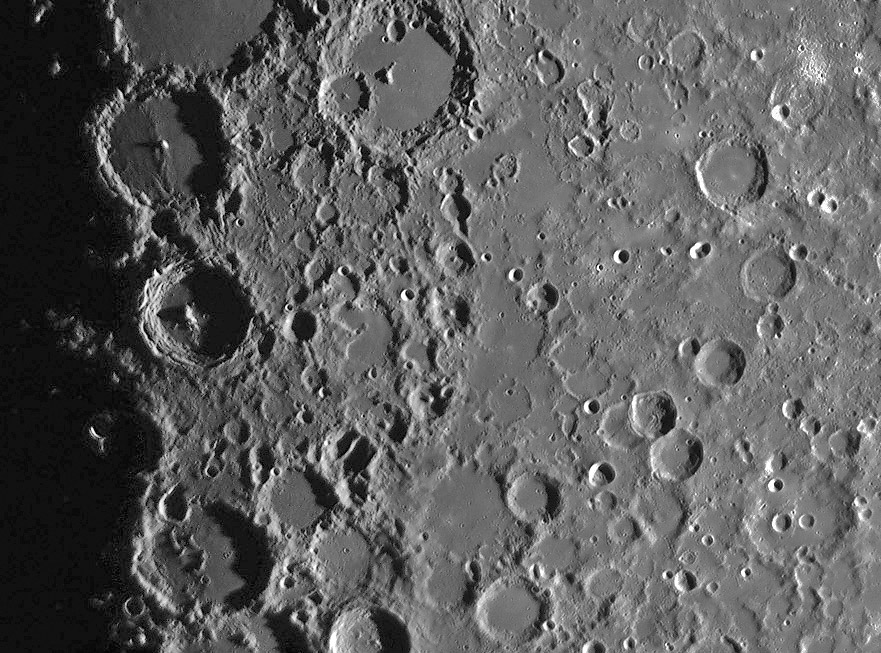
image by Christophe Behaegel, Belgium
Geologists have recognized various chemical and structural boundaries within and around the maria because they are easy to see. The highlands remain largely undivided because it is hard to distinguish regions with different characteristics. But right in the middle of the Earth-facing lunar hemisphere is a very distinctive boundary that is often unnoticed. The western half of this broad scene by Christophe is dominated by craters, big (Ptolemaeus, Alphonsus , Hippachus, Werner) and small. The area is highly textured with imbrium ejecta and simply seems rough - there are few flat spots. The east (right) half of the scene seems to have fewer craters and there is more smooth plains material within and surrounding them. In partiular, there is an apparent trough that goes north to south near the center of the image. It is just east of a number of named craters: Hipparchus, Vogel, Airy, Donati and ends at Krusenstern. This is a linear area of low partial craters, all filled with smooth plains material. There is a distinct boundary, with a step down from west to east. Is this boundary real, or is it an artifact of being further from the terminator, or is it surficial - does the Imbrium ejecta change its nature from left to right? These are both partially true, but the trough is real - it is an abrupt change in character of the surface. What caused it? It is quite linear, which implies that it may be tectonic - that is, deep seated, a fracture in the crustal rocks. We need more views, more data and more ideas!
Technical Details
26-March-2007. Mewlon 210 @ f11.5
Related Links
Christophe’s website.
COMMENTS?
Click on this icon File:PostIcon.jpg at the upper right to post a comment.



